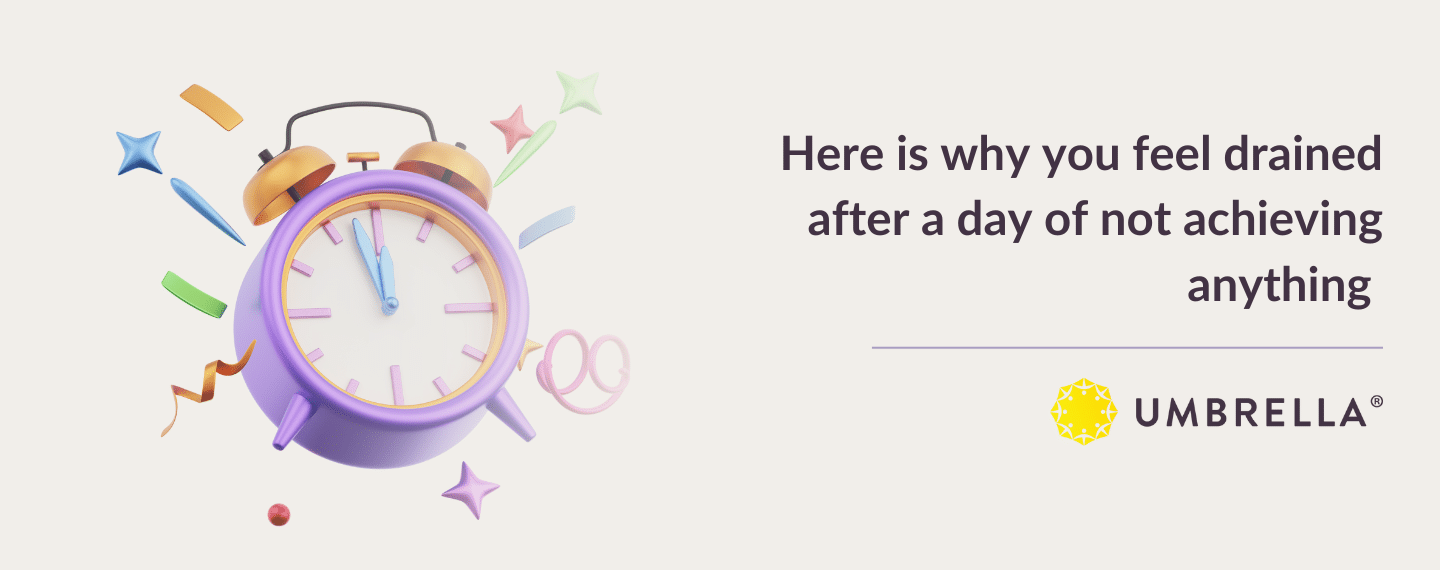47 seconds.
We spend an average of just 47 seconds on any screen before shifting our attention to something else. It then takes, on average, around 25 minutes to bring our attention back to a task after an interruption.
Constantly switching between tasks, whether it’s during work or our leisure time, or while connecting with others, makes it difficult for us to really get into the zone or to truly relax. When we try to do too many things at once, this can result in lost productivity, increased likelihood of making mistakes and increased stress, to name just a few of the effects.
Many researchers call this phenomenon time confetti, a term coined by journalist Brigid Schulte.
What is time confetti?
According to organisational psychologist Adam Grant, “Time confetti [occurs when] we take what could be meaningful moments of our lives and we shred them into increasingly tiny, useless pieces. Time confetti is an enemy of both energy and excellence.”
In other words, our fragmented attention is eating away at our opportunity to live full, meaningful and productive lives.
It’s no surprise that our increasingly fragmented attention is largely due to the digital world we live in. Many of the time-shredding tasks that we engage in include constantly checking our emails, texts and notifications, plus never-ending scrolling on our social media feeds.
As you read up to this point, check how many tabs you have open, or how many notifications you received in the last few minutes. Notice where else your attention might be.
What can time confetti look like?
In a corporate environment, time confetti might look like fragmented blocks of time spent in unproductive back-to-back meetings, constant email checking, and interruptions from co-workers when you’re trying to do some “deep work”.
We can see time confetti in different working environments as well. For example, for those in construction, time confetti could manifest as interruptions and delays caused by unforeseen issues, delivery delays, equipment malfunctions or last-minute design changes.
At home, we might notice the confetti effect when we are trying to do too much at once – cooking dinner, helping the kids with homework, texting a friend back, all the while mentally planning what we will say in a work meeting tomorrow.
This constant shifting of attention between tasks leads to a feeling of busyness without real productivity, as we struggle to make meaningful contributions in the face of these distractions. It also leads to a sense of fatigue and depletion when we’ve spent hours on end putting our brain through cognitively effortful switches, without refilling our energy stores with tasks that are nourishing and satisfying.
How to get your time confetti under control
- Debunk the myth that it’s possible to focus for long stretches at a time. Let’s face it, even though some of us wish we could focus for hours on end like productivity superheroes, the reality is that our brains just aren’t built that way. Both employees and employers need to understand that it’s unrealistic to focus for extended periods of time – it’s unfair to expect this of yourself and of others. It starts with acknowledging that breaks are necessary, and in fact make us more productive in the long run.
- Practise the skill of “meta-awareness”. “Meta-awareness” refers to being more conscious about our thoughts and behaviours. When it comes to time confetti, we know that we can’t focus for long periods of time. This means that we should make the most of our focused periods by understanding when our peak focus times are. You can start to identify when your focus peaks and falls by keeping a diary and marking down the times you were most focused and productive throughout the day. Are you at your best first thing in the morning, or do the ideas flow in the afternoon? Once you know your peak focus times, this is when you can maximise your focus time by working with your energy patterns and blocking distractions. Yes, that might mean all notifications off, your phone off, your “out-of-office” on your email switched on, and your door closed (or noise-cancelling headphones on) while you’re in peak focus. Employers can help too by giving employees the autonomy to manage their own schedules.
- Be intentional with breaks. For some of us, taking intentional breaks can be difficult. But research consistently tells us that taking breaks can help to replenish our energy and moods, and can be beneficial for our health, wellbeing and productivity. Breaks throughout the workday are essential, and even a couple of minutes of mindless tasks (e.g., playing Candy Crush) can be beneficial, if they provide a cognitive break for us. Other methods like the Pomodoro technique, which alternates focused work with short breaks (e.g., 25 mins focus, 5 min break, 25 mins focus, 5 min break etc), can also be helpful. It’s also just as important for leaders to model this type of intentional break-taking, to set a positive example to their teams.
- Above all else, strive to be present and mindful. Whether you’re playing a game on your phone or checking emails, try giving that activity your full attention. Multitasking or switching back and forth between tasks can use up our precious mental resources that we need to use to focus, complete tasks, and be productive. If you are going through emails, do this at a time you set aside to do so, not while you’re in another meeting. Being mindful helps you focus better, and if leaders can also model this type of behaviour, it sets a great example to ditch the juggling act and start being more present.



